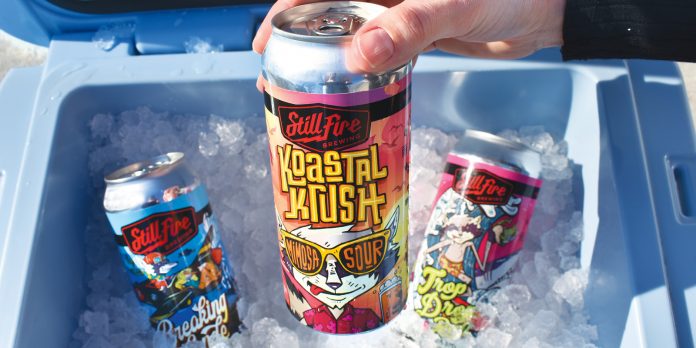Brewmaster Phil Farrell explains the evolution of summer beer styles and offers a few alternatives to buck the traditional summer trends.
The days are getting longer, and it seems like it is getting a little warmer every day so it is time to look for a “summer” beer, right? Well, this is the 21st century. American craft brewers have been at it for over 50 years to bring you the widest world of beers ever created. You can drink whatever you want, whenever you want, wherever you want. That said, let’s explore the beer styles that traditionally popped up during the summer more out of necessity than to appeal to consumers.
WHY LIGHTER IN SUMMER
Refrigeration and later temperature control were unknown for most of the 1800s. Going to the pub for “a tall cold one” didn’t exist until about the time your great grandpa was knocking them back. Fruit was not commonly added to beer back then, however being an agricultural product like grain, less of both were available for brewers as the summer progressed and harvest approached. Less grain used brewing a batch of beer meant the beer was lighter and lower alcohol. Specialty malts and grains (the roasted and toasted ones that add darker colors to beer) often became scarce for the same reason. Without true temperature control in the brewery, as the outside temperatures became warmer, the yeast fermenting the beer added more fruity esters than they would in the winter.
Wheat became an ingredient associated with the summer. Beers made with wheat became summer favorites in Bavaria specifically because the King made a decree that brewers were forbidden from brewing all-barley beers as required by the Reinheitsgebot purity law. This Bavarian Weissbier had fruity esters and hints of spice from the ale yeast used. In Belgium, the locals added orange peel and spices to their wheat beer. Wild fermentation beers were also brewed during the spring for summer enjoyment when wild yeast was floating in the air. With modern world-wide supply chains, fruit is available year-round, and in such variety that the only limiting factor is the imagination and creativity of the brewer.
A strong drink warms your body by dilating your blood vessels. A whiskey by the fire at the end of a cold evening evokes that iconic winter moment. When the weather warms, drinkers gravitate toward colder and lighter in both color and alcohol level beers. Thirst quenching and drinkability are key components. Drier finishes and smoother bitterness become more prevalent and popular in the summer. The simple, crushable “lawnmower” beers are a staple at picnics, ballgames, and on the beach. Most of those are clean, low alcohol lagers, that check off the “satisfy the thirst” box and lend themselves to being served ice-cold. Fruit may be added to ales or lagers whether they contain wheat or not. The key is balancing the tartness of the fruit without becoming too sweet or heavy on the palate.
ALTERNATIVE STYLES TO TRY
There are a few types of beers that buck the summer trend. Fruity IPAs – whether it is from hops, fruit, or both – can be designed to be ideal summer beers if the finish is dry and the alcohol moderated. The original dry Irish stouts are very low in alcohol, dry from roast in the finish, and not nearly as full on the palate as their dark color suggests. Simple sour styles such as Gose, Berliner Weise, and modern American craft sours feature clean lactic tartness that is very thirst quenching paired with an appropriate fruit, the possibilities are endless.
In summary, unlike Fred Flintstone, modern craft brewers don’t have to hold back on creativity in the summer due to ingredient shortages or dinosaur-powered equipment made of stone. The contemporary beer drinker can choose to drink whatever they are in the mood for, and your local brewery is more than willing to offer endless choices to quench your summer thirst.
 Brewmaster Phil Farrell brings nearly four decades of world-class brewing experience to StillFire Brewing. Under his stewardship, StillFire Brewing has become the most award-winning new brewery in Georgia earning over 20+ national and regional awards including two medals at the Great American Beer Fest. As a BJCP Grand Master Level 6 beer judge (one of the top 10 ranked judges in the world) Farrell has judged over ten thousand beers in every preeminent beer contest in the world.
Brewmaster Phil Farrell brings nearly four decades of world-class brewing experience to StillFire Brewing. Under his stewardship, StillFire Brewing has become the most award-winning new brewery in Georgia earning over 20+ national and regional awards including two medals at the Great American Beer Fest. As a BJCP Grand Master Level 6 beer judge (one of the top 10 ranked judges in the world) Farrell has judged over ten thousand beers in every preeminent beer contest in the world.

















